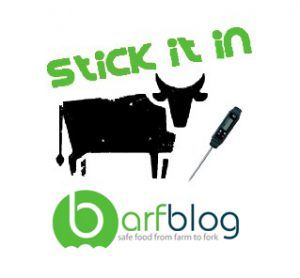I still can’t say no to students.
Beth Driscoll, MA, CPHI(C), CHA, PMP (I’m not sure what all those initials mean) and PhD Candidate, Policy Studies, at Ryerson University (that’s in Toronto, which is in Canada) writes:
 My name is Beth Driscoll, and I am inviting you to participate in a brief, online survey. This survey will take approximately 15 minutes to complete, and investigates the perceptions of Global Food Safety Initiative (GFSI) auditors’ role in public health. This survey is being conducted for my doctoral research project at Ryerson University.
My name is Beth Driscoll, and I am inviting you to participate in a brief, online survey. This survey will take approximately 15 minutes to complete, and investigates the perceptions of Global Food Safety Initiative (GFSI) auditors’ role in public health. This survey is being conducted for my doctoral research project at Ryerson University.
To participate in this project, you must:
•]be fully certified to conduct GFSI audits for at least one benchmarked scheme;
• have completed at least five GFSI audits of that scheme; and,
• be fluent in English.
The survey is not intended to investigate or assess the GFSI, a GFSI benchmarked Food Safety Scheme, Certification Body, Accreditation Body, government or other organization. Should the responses to the survey questions contain information that would identify one of these organizations, the identifying information will be anonymized prior to use.
Conflict of interest declarations: I am a contract employee for NSF International. This information is being collected solely for my researcher’s graduate degree, and is not being collected for any organization associated with the GFSI or NSF International, nor do I conduct GFSI audits.
If you choose to participate, you will be asked to complete an online survey about your professional identity and your understanding of your role in public health through the audits you conduct to a Global Food Safety Initiative (GFSI) benchmarked Food Safety Scheme. The survey is confidential is using Opinio, Ryerson University’s Online Survey Program, and all data is stored at Ryerson University. This study has undergone review through the Ryerson University Research Ethics Board and if you have questions about your rights as a research participant, you may contact the Ryerson Research Ethics Board at rebchair@ryerson.ca. If you have any questions about the survey please contact the researcher, Beth Driscoll, at edriscol@ryerson.ca or Dr. Richard Meldrum at meldrum@ryerson.ca before continuing.
Please feel free to forward this email to anyone you feel may be qualified to participate.
To participate, please go to the following website: https://survey.ryerson.ca:443/s?s=6004






